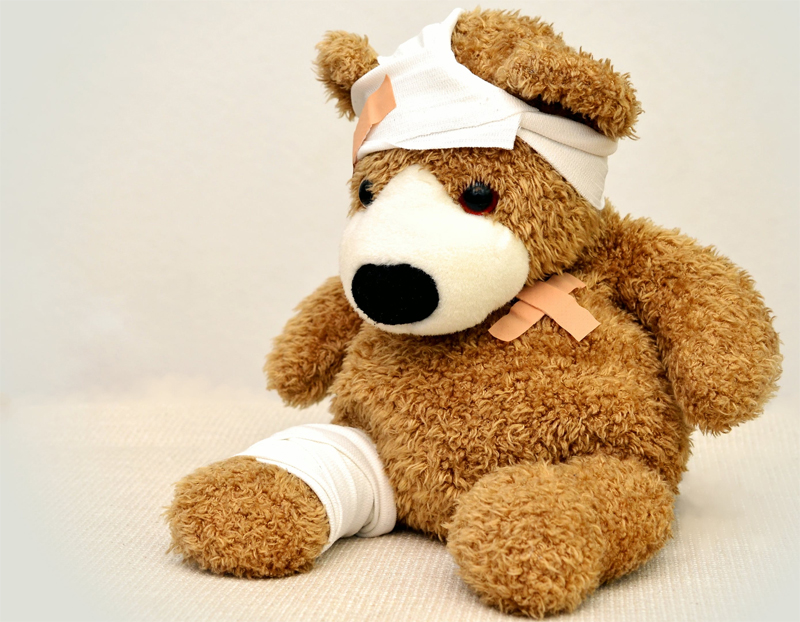
While we can’t always steer clear of any debilitating injuries that could happen to us, it’s still best to prepare for such injuries from the get-go. For that, you need an all-organic first aid kit that includes materials that are safe for anyone and environmentally-friendly as well. The best part about this is that you can find all sorts of first aid items just about anywhere.
It’s only a matter of knowing the right materials to put in an all-organic first aid kit. Here are some of the best ones based on each type of household injury:
- Poisoning
From accidental ingestion to full-on overdose, poisoning remains one of the top leading causes of household deaths in the United States. For sure, when you see someone with obvious signs of poisoning, it’s important to move swiftly in picking the right remedy.
Minor poisoning can easily be treated with a teaspoon of activated charcoal, but for more serious cases of food poisoning, you might want to use hot apple cider in providing temporary relief. Simply mix the substance in a cup of hot water and let the patient take steady sips of the liquid. Honey and garlic are also great for easing the digestive system by getting rid of bacteria that cause food poisoning.
It’s important to remember, however, that chemical poisoning requires specialist care. So, even if you use organic means to treat chemical poisoning, relief will only be temporary. Immediate medical attention is still required to prevent any sort of complication.
- Cuts and Bruises
Open wounds are caused by a variety of problems. All the same, they can lead to serious infection if you are unable to act swiftly. Bandages and antiseptic solutions are the usual materials for treating cuts and bruises, but what happens if you run out of the essentials for cleaning open wounds?
Fortunately, there are lots of home remedies you can try out, like turmeric. This spice is a great addition to any home-cooked meal, but it’s also known for its antiseptic properties. You only need to wash the wound in running water before applying some turmeric. This should help control the bleeding and prevent the onset of infection.
Aloe vera is also another effective means to soothe an open wound and prevent inflammation. All you have to do is to extract the gel from an aloe vera leaf and apply it directly on the wound. After letting it sit for several minutes, wash away the gel with warm water. The wound won’t get any worse from there.
To complete your all-organic first aid kit for cuts and bruises, stock up on some fresh onions. Not that you would make a salad out of your wounds, but onions are known for absorbing bacteria, making it an effective natural remedy for cuts, thanks to the substance known as allicin.
There are numerous other plants that can help a lot in treating open wounds. You just have to do a great deal of research before you include them in your first aid stash.
- Burns
Burn injuries are also fairly common in American households and even at the workplace. From motorcycle accidents to defective products, anything can be a potential cause for serious burn injuries. You can check out herrmanandherrman.com/personal-injury-lawyer/burn-injury/ for more about this, but it’s still important to come prepared for burn emergencies regardless of the severity.
Aside from cold water and ibuprofen, you also need to apply aloe vera gel along with lidocaine on the affected area. This should help ease pain and accelerate recovery. Applying honey can also help treat minor burns. After washing the affected area with cold tap water, you may dab some honey periodically to help reduce the pain and prevent swelling.
Another great way to treat burn injuries is using lavender, which is also known for its pain-relieving properties. The essential oil from lavender can be applied directly to a burn wound for gradual relief. You can also mix the essential oil with water and other herbs and spray the mixture onto the affected area.
- Bone Pain
When it comes to treating bone injuries, there is not much else you can do but use standard first aid practices and seek immediate medical attention. Everything else serves as support to bone recovery. For that, we can look at a few plants that work wonders in helping patients recover from fractures.
One study points to the tree Cryptolepis buchanani which has been a part of indigenous medicine in certain regions in Southeast Asia. Natives prepare a paste from the leaves of the tree and mix it with herbs and mustard oil. The mixture is then applied to the site of the injury over time. Researchers find that the tree displays antibacterial properties, making it a sought-after remedy for minor bone injuries.
Apart from Cryptolepis buchanani, there are other well-known remedies for treating bone-related ailments and not just fractures. Osteoarthritis, for one, affects thousands of seniors in the country. And while they are prescribed with drugs and other means to address pain, they may have to consider adding a few organic ingredients to their medical kit.
There’s green tea, which is known to reduce inflammation, along with turmeric, which also has numerous other benefits to provide. Just be sure to ask your doctor about the right way to prepare turmeric and the right dosage per day.
It’s important to remember that the natural remedies mentioned here should not replace conventional first aid practices. They can, however, come in handy when the need arises. So, as you shop around for bandages, aspirin, and antiseptic solutions, keep these organic solutions in mind. You never know when you’ll need them.
Comments
comments